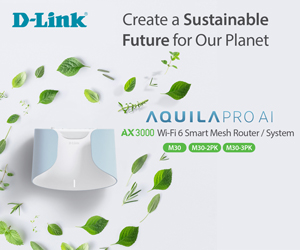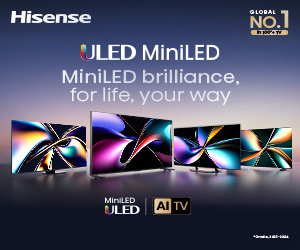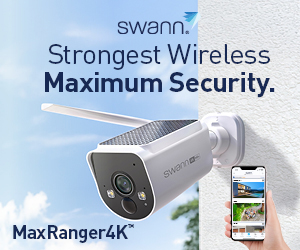The Motorola e13 4G smartphone is, by definition, entry-level at $149, and as we have said before, there are compromises in reaching that price point. It is a good phone, but $50 more gets a better phone.
The same is true of Nokia and other entry-level smartphones.
- 32-bit Android Go (won’t run 64-bit Google Play Apps).
- No OS update – 13, is it.
- Limited patches – 2 years.
- 2GB slow ram and 64GB eMMC slow flash storage.
- Single rear camera.
- Laggy processor and performance.
- No NFC.
- 7 hours plus charge – no charge supplied.
For $50 more, the Motorola g22 – cheap and cheerful (smartphone review) solves all these issues. And you won’t be locked to a Telco and paying higher data/voice plans.
So with that in mind, forgive us if we are not effusive and don’t recommend this device unless all you have is $149 – find the extra for the G22.
Australian Review: Motorola e13 4G, 2/64GB, Model XT-2345-6 (Single SIM and dedicated microSD)
| Website | Product Page TBA |
| Price | Retail outright $179 Telco package $149 plus a plan Update: 3/8/23: Optus has $50 off to 26 September 2023 – . Vodafone has a range of pre-paid plans with monthly device repayments as little as $1! Details available on carrier websites. |
| Colours | Cosmic Black – retail Ink Blue |
| From | Retail: Big W, Harvey Norman, JB Hi-Fi, Mobile Citi, Officeworks, The Good Guys, Amazon and motorola.com.au Telstra, Optus and Vodafone |
| Warranty | 2-years |
| Made in | China |
| Company | Owned by Lenovo (Est 1984) – a multinational technology company with its primary operational headquarters in Beijing and Morrisville, North Carolina. It is the world’s largest PC maker, and it purchased Motorola Mobility from Google in 2014. Most of Lenovo’s smartphone business is now under the Motorola brand, with grand plans to become a ‘top five’ smartphone maker. |
| More | Other CyberShack Nokia news and reviews |
Deep-Dive review format
It is now in two parts – a summary (the first part) and a separate 300+ line database-driven spec, including over 70 tests to back up the findings. It also helps us compare different phones and features.
We use Fail (below expectations), Passable (meets low expectations), Pass (meets expectations), Pass+ (near Exceed but not class-leading) and Exceed (surpasses expectations or is the class leader) against many of the items below. You can click on most images for an enlargement.

First impression – a basic smartphone for a basic price – Pass
It is an unremarkable glass slab. Motorola has done a good job on build quality, and the black plastic back has metal overtones.
It lacks a fingerprint sensor – just a 2D face unlock or a Pin.
Screen: 6.5”, 1600 x 720p, 20:9, 60Hz, IPS LCD – Pass
It is a fingerprint magnet. It is not daylight readable at a typical/peak brightness of 250/350 nits (test 245/330) – fine in the shade. The contrast is 1200:1 (tested 1100:1), but colour accuracy has a distinct blue cast. Fortunately, it has no PWM, so it is acceptable for those sensitive to that. The 720p screen is fit-for-purpose and has an L3 Widevine rating for HD SDR streaming content.
It has an obvious centre-notch selfie and quite wide bezels.
Processor: UNISOC T606, 2GB, 64GB eMMC – Barely passable
It is the same 12nm processor used in multiple entry-level phones from Nokia, Samsung, and Motorola.
We don’t have to run tests (but we did) because this is a very slow processor, exacerbated by 2GB RAM, slow eMMC storage, and 32-bit Android Go. Screen lag is there every time you select an App, and it quickly chokes if you leave multiple Apps open. OS updates take up to an hour instead of 15-20 minutes.
Its performance is like a MediaTek P70 and Qualcomm SD665.
Geekbench 5 single core score is 154, but multi-core would not run. OpenCL and Vulcan GPU tests would not run.
2GB of RAM means it runs in 32-bit Android Go Mode (usually 64-bit full Android), which means not all Apps will run.
64GB eMMC(44GB Free). CPDT sequential read/write scores are 179/127MBps – very slow. It will mount a MicroSD card to 1TB at 83/32MBps. An external USB-C S1TB SD hung the phone, but it seems OK with up to 256GB Flash Drives.
Throttling is minimal, but you will note the low GIPS (power).

Summary: Android Go is 32-bit, and 2GB is barely enough to function. The device is laggy, slow and often hangs for a second or two. It is the quintessential lowest-cost phone.
Comms – Wi-Fi 5 AC, BT 5.0 – Pass
Wi-Fi 5 AC has a theoretical maximum of 433Mbps. Our tests show a maximum of 292Mbps with reasonable signal strengths out to 10m.
As it is not a Qualcomm SoC, it does not have its aptX sound codecs, which means you are limited to SBC and AAC with 200+ms latency – too high for gamers.
It does not have NFC.
GPS performance is slow and accurate to 10+ metres, but the phone takes far too long to recalculate routes, so do not rely on it for turn-by-turn navigation at speed.
Phone – for capital city and suburbs only – Passable
As seems typical with UNISOC modems, it could only find the nearest tower, at up to 500fW. Pass for capital city users with good tower coverage.
Battery: 5000mAh and 10W charging – Barely passable
First, we must chastise Motorola for no charger inbox. Sure, it is a 5V/2A/10W charger that everyone should have lying around, but this market expects one.
It takes over 7 hours to charge – using a higher-wattage charger does not speed this up.
- Video loop 50% brightness/volume, aeroplane mode: 19 hours 36 minutes
- PC Mark Modern Office Battery life: 23 hours 24 minutes
- GFX Bench Manhattan and T-Rex tests – would not run
- GFX Bench T-Rex: 733.7 minutes (12.23 hours), 1931 frames
- 100% load battery drain: 4 hours 43 minutes
- Idle mA: 350-400
- Full load mA: 1150-1200
Battery Summary: Reasonable battery life but unacceptable charge times and relatively high load current makes this hard to recommend. It uses too much energy on standby and will need daily charging.
Sound – Passable
This mono device with Dolby Atmos decode is as useless as a screen door on a submarine! It is more about bragging rights and does precisely nothing except add an EQ that does not work.
- Maximum volume is 78dB (a tad low).
- Handsfree is poor with one bottom mic, no noise cancelling and low speaker volume.
- BT codecs are SBC and AAC, but the channel separation and BT volume were only average.
- It has no bass, almost no mid, late mid and early treble for clear dialogue and no mid or upper treble, so the music is not good and lacks vitality.

Build – Pass
Never mind the plastic frame or PMMA (Polymethyl Methacrylate shatter-proof glass substitute) back – it is probably more shatterproof than glass. It is well-made, and the warranty is one year for retail sales and two years via the Telco. It is IP52 – not very water-resistant.
Android 13 Go – Barely passable
It ships with 32-bit Android 13 Go and Motorola’s overlay My UX. There is no OS upgrade; you can reasonably expect two years of security patch updates.
Android is almost pure, and the MY UX adds things like a camera app and Moto gestures. See the table for all features.
But Android Go is slow and does not run 64-bit Android Apps, so you are limited in what you can do.
Missing
- NFC, but we don’t expect that at this price
- Performance
- Sound quality
Camera – Motorola e13 4G

It has a single 13MP Galaxy Core GC13053 sensor and a 5MP selfie. Camera performance is basic and shooting options are limited (no night mode or Macro).
UNISOC AI competence is an unknown, but it produces social media class shots in decent day or office light. Video struggles.







Camera Comments
- 1X Day Primary sensor – the colours are natural with a decent dynamic range. Good details in the background, shadows, and highlights.
- 2X Day Primary sensor – colours are natural with good dynamic range. The background is getting noisy.
- 4X Day: Primary sensor – pushing its limits.
- Macro: Does not have a macro sensor, but the primary sensor handles this to 4cm focus
- Indoor office light: Colours are good, and the dog’s face/ears are black.
- Bokeh Depth: Even though there is a portrait setting, it requires a human face for bokeh.
- Dark <40 lumens: The standard (not night mode) is quite good, with adequate details, although there is too much noise.
- Night mode: Not applicable.
- Selfie: The 5MP selfie has natural skin tones, details, and a range of filters to enhance any image. Best in day and office light.
- Video (we are not video experts): You can shoot at 1080p@30fps. It struggles, and you would be better at 720p@30fps.
CyberShack’s view – Motorola e13 4G– redefines entry level in a mostly adequate way
It is fit-for-purpose if this is all you can afford and lower your expectations. At this level, you get what you pay for!
But the processor crawls, photography results are variable, phone reception is capital city use only, and we had to drink much coffee waiting and waiting for tests to complete that usually take a few seconds to minutes.
It is not helped by 32-bit Android Go (and 32-bit Apps), a meagre 2GB of RAM, slow 64GB eMMC (18GB free), and it hangs and freezes too often. Did I say it is snail’s pace slow?
One wonders how low you can go – see Best Android phones 2022 – $200 to $2000 (guide January 2023 update) and still get a decent functional, if slow, phone. Frankly, we thought the $179 Motorola g22 – cheap and cheerful was borderline, but compared to this, it is stellar.
Rating Explanation – Motorola e13 4g, 73 out of 100
Any smartphone scoring over 7 is adequate.
- Features: 75 – It has basic features commensurate with the price. Loses points due to no charger inbox.
- Value: 80 – Only from a Telco on a plan
- Performance: 60 – It is an entry-level value SoC, and you get fit-for-purpose performance. It is not for gamers.
- Ease of Use: 70 – My UX adds some value to stock Android, but it loses points for 32-bit Android Go. 2 years of security patches.
- Design: 80 – All plastic is fine – looks like a more expensive smartphone
Motorola e13 4G
| CyberShack Smartphone comparison v 1.7 (E&OE) | |
| Brand | Motorola |
| Model | Motoroal e13 4G |
| Model Number | XT2345-6 |
| Price Base | 2/64 |
| Price base | $149 from Telcos only |
| Price 2 | |
| Price 3 | |
| Price 4 | |
| Warranty months | 24-months Telco carrier |
| Tier | Entry-level |
| Website | https://www.motorola.com/we/smartphones-moto-e-13/p?skuId=493 |
| From | Telstra Optus |
| Country of Origin | China |
| Company | Owned by Lenovo (Est 1984) – a multinational technology company with its primary operational headquarters in Beijing and Morrisville, North Carolina. It is the world’s largest PC maker. It purchased Motorola Mobility from Google in 2014. Most of Lenovo’s smartphone business is now under the Motorola brand, with grand plans to become a ‘top five’ smartphone maker. |
| More | |
| Test date | 45017 |
| Ambient temp | 20° |
| Release | May 2023 |
| Other models not for Australia (Don’t buy) | Only buy from Telstra or Optus – no retail availability |
Screen
| Size | 6.5″ |
| Type | IPS LCD |
| Flat, Curve, 2D, 3D | Flat |
| Resolution | 1600 x 720 |
| PPI | 270 |
| Ratio | 20:9 |
| Screen to Body % | 0.828 |
| Colours bits | 8-bit 16.7m colours |
| Refresh Hz, adaptive | Fixed 60Hz |
| Response 120Hz | N/A |
| Nits typical, test | 250 (test 245) |
| Nits max, test | 350 (tested 330) |
| Contrast | 1200:1 (tested 1100:1) |
| sRGB | Not tested |
| DCI-P3 | Not tested |
| Rec.2020 or other | No |
| Delta E (<4 is excellent) | N/A, but above 4 |
| HDR Level | SDR |
| SDR Upscale | No |
| Blue Light Control | Yes |
| PWM if known | No |
| Daylight readable | No |
| Always on Display | No |
| Edge display | No |
| Accessibility | Usual Android features |
| DRM | L3 (lowest) – 480p at best, but Netflix will not play |
| Gaming | Not for gaming |
| Screen protection | Unknown |
| Comment | Slight blueish cast – best to use the Natural setting. Fit for purpose |
Processor
| Brand, Model | UNISOC T606 https://www.unisoc.com/en_us/home/TZNSJ-T606-5 |
| nm | 12 |
| Cores | [email protected] + [email protected] |
| Modem | 4G Cat 7 |
| AI TOPS | |
| Geekbench 5 Single-core | 154 |
| Geekbench 5 multi-core | Would not run – Android Go |
| Like | Used in Nokia G11/21/22/ Samsung Galaxy A03 Motorola e13/20/32 Between MT Helio P70 and Qualcomm SD665 |
| GPU | ARM Mail G57 1-core 650Mhz |
| GPU Test | |
| Open CL | Would not run |
| Like | N/A |
| Vulcan | Would not run |
| RAM, type | 2GB LPDDR3 |
| Storage, free, type | 64GB eMMC (44GB free) |
| micro-SD | Up to 1TB |
| CPDT internal seq. Read MBps | 179 – typical of eMMC Flash memory |
| CPDT internal seq. write MBps | 127 |
| CPDT microSD read, write MBps | 83/32 |
| CPDT external (mountable?) MBps | 1TB test unit identified in My Files but not seen in CPDT – not mountable |
| Comment | Android Go is 32-bit, and 2GB is barely enough to function. The device is laggy, slow and often hangs for a second or two. It is the quintessential lowest-cost phone. |
| Throttle test | |
| Max GIPS | 121914 |
| Average GIPS | 120207 |
| Minimum GIPS | 82413 |
| % Throttle | No |
| CPU Temp | 50 |
| Comment | Good thermal management |
Comms
| Wi-Fi Type, model | Wi-Fi 5 AC |
| Test 2m -dBm, Mbps | -33/292 |
| Test 5m | -39/292 |
| Test 10m | -48/292 |
| BT Type | 5 |
| GPS single, dual | Single |
| USB type | USB-C 2.0 480Mbps |
| ALT DP, DeX, Ready For | No |
| NFC | No |
| Ultra-wideband | No |
| Sensors | |
| Accelerometer | Yes – combo with Gyro is very sensitive |
| Gyro | Yes |
| e-Compass | |
| Barometer | |
| Gravity | |
| Pedometer | |
| Ambient light | Yes |
| Hall sensor | |
| Proximity | Yes |
| Other | No |
| Comment | Wi-fi AC speeds are lower than expected – they should have been 433Mbps. Again typical of the UNISOC. |
LTE and 5G
| SIM | Retail: Dual Sim and dedicated microSD Telco – single sim and dedicated microSD |
| Active | Only one active at a time |
| Ring tone single, dual | Dual |
| VoLTE | Carrier dependent |
| Wi-Fi calling | Carrier dependent |
| 4G Bands | 1/3/5/7/8/28/40 |
| Comment | All Australian 4G bands |
| 5G sub-6Ghz | N/A |
| Comment | N/A |
| mmWave | N/A |
| Test Boost Mobile, Telstra | |
| UL, DL, ms | 28/11/23ms |
| Tower 1 -dBm, fW or pW | -96/300-500fW |
| Tower 2 | No |
| Tower 3 | No |
| Tower 4 | No |
| Comment | It appears typical of the Unisoc modem. This is a city/suburbs phone only if you have good tower coverage. |
Battery
| mAh | 5000 |
| Charger, type, supplied | Not supplied – 5V/2A/10W capable |
| PD, QC level | No PD, but can use PD chargers. |
| Qi, wattage | N/A |
| Reverse Qi or cable | N/A |
| Test (60Hz or adaptive screen) | N/A |
| Charge % 30mins | |
| Charge 0-100% | Over 7 hours |
| Charge Qi, W Using Belkin Boost Charge 15W fast wireless charge | N/A |
| Charge 5V, 2A | Over 7 hours |
| Video loop 50%, aeroplane | 19 hours 36 minutes |
| PC Mark 3 battery | 23 hours 24 minutes |
| GFX Bench Manhattan battery | Would not run |
| GFX Bench T-Rex | 733.7 minutes (12.23 hours) 1931 frames |
| Drain 100-0% full load screen on | 4 hours 43 minutes |
| mA full load | 1150-1200 |
| mA Watt idle Screen on | 350-400 |
| Estimate loss at max refresh | N/A |
| Estimate typical use | The maximum it would charge at 5V/2A/10W, taking an extraordinary 7+ hours. We tried with several chargers, but the result was the same. |
| Comment | Reasonable battery life but unacceptable charge times and fairly high load current makes this hard to recommend. It uses too much energy on standby and will need daily charging. |
Sound
| Speakers | Mono earpiece and down-firing bottom speaker. |
| Tuning | No |
| AMP | Unisoc |
| Dolby Atmos decode | No – DA EQ |
| Hi-Res | No |
| 3.5mm | Yes |
| BT Codecs | SBC and AAC only |
| Multipoint | Likely not |
| Dolby Atmos (DA) | Yes – auto/ movie/ music/ voice and games mode |
| EQ | See DA |
| Mics | Single |
| Test dB – all on EQ flat DA off | |
| Volume max | 78 |
| Media (music) | 72 |
| Ring | 66 |
| Alarm | 80 |
| Notifications | 65 |
| Earpiece | 48 |
| Hands-free | Slightly low volume, no noise-cancelling, so keep it close to your face. |
| BT headphones | Good volume and channel separation |
Sound quality
| Deep Bass 20-40Hz | Nil |
| Middle Bass 40-100Hz | Nil |
| High Bass 100-200Hz | Nil |
| Low Mid 200-400Hz | Slowly building |
| Mid 4000-1000Hz | Slowly building |
| High-Mid 1-2kHz | Flat |
| Low Treble 2-4kHz | Flat |
| Mid Treble 4-6kHz | Flat |
| High Treble 6-10kHz | Linear decline to 20kHz |
| Dog Whistle 10-20kHz | decline |
| Sound Signature type | Mid for clear voice. Music quality is poor, with no bass, no treble and lacking any vitality. |
| Soundstage | Mono – none |
| Comment | Suitable for voice but not for music |
Build
| Size (H X W x D) | 164.19 x 74.95 x 8.47mm |
| Weight grams | 179.5 |
| Front glass | Not specified – likely toughened |
| Rear material | Plastic |
| Frame | Plastic |
| IP rating | 52 – light rain |
| Colours | Black |
| Pen, Stylus support | No |
| In the box | |
| Charger | No |
| USB cable | USB-A to USB-C 2W capable – no data lines |
| Buds | No |
| Bumper cover | Yes |
| Comment | Loses points due to no included charger |
OS
| Android | Android 13 32-bit Go edition |
| Security patch date | 5 April |
| UI | Gestures: Press and hold the power button, System navigation, Fast flashlight, Three finger screenshot, Quickly open the camera |
| OS upgrade policy | No |
| Security patch policy | Two years of security patches |
| Bloatware | Facebook (uninstallable) |
| Other | |
| Comment | There is a lot of added functionality in MY UX, which leaves the underlying Android alone. But this is 32-bit Android Go, and 64-bit Apps will not run. |
| Security | |
| Fingerprint sensor location, type | No |
| Face ID | Yes |
| Other | |
| Comment |
Camera – Motorola e13 4G
| Rear Primary | Wide |
| MP | 13MP |
| Sensor | Likely Galaxy Core GC13053 |
| Focus | PDAF |
| f-stop | 2.2 |
| um | 1.12 |
| FOV° (stated, actual) | 69.2-81.3° |
| Stabilisation | No |
| Zoom | 4X digital |
| Video max | 1080p@30fps |
| Flash | Yes |
| Auto-HDR | Primary sensor only |
| Shooting modes: Portrait Photo Panorama Artificial intelligence: Auto Smile Capture Other features: HDR Leveller Timer Assistive Grid | |
| QR code reader | Google lens |
| Night mode | No |
Front – Motorola e13 4G
| MP | 5MP |
| Sensor | Likely Samsung S5KE9Y |
| Focus | FF |
| f-stop | 2.2 |
| um | 1.12 |
| FOV (stated, actual) | 65.4-77.5 |
| Stabilisation | No |
| Flash | Screen fil |
| Zoom | No |
| Video max | 1080p@30fps |
| Features | Shooting modes: Portrait Photo Artificial intelligence: Face Beauty Auto Smile Capture Other features: HDR Leveler Mirror Assistive Grid Watermark Timer |
Camera comment – Motorola e13 4G
| • 1X Day Primary sensor – the colours are natural with a decent dynamic range. Good details in the background, shadows, and highlights. • 2X Day Primary sensor – colours are natural with good dynamic range. The background is getting noisy. • 4X Day: Primary sensor – pushing its limits. • Macro: Does not have a macro sensor, but the primary sensor handles this to 4cm focus • Indoor office light: Colours are good, and the dog’s face/ears are black. • Bokeh Depth: Even though there is a portrait setting, it requires a human face for bokeh. • Dark <40 lumens: The standard (not night mode) is quite good, with adequate details, although there is too much noise. • Night mode: Not applicable. • Selfie: The 5MP selfie has natural skin tones, details, and a range of filters to enhance any image. Best in day and office light. • Video (we are not video experts): You can shoot at 1080p@30fps. It struggles, and you would be better at 720p@30fps. |
Ratings
| Features | 7.5 |
| It has basic features commensurate with the price. Loses points due to no charger inbox | |
| Value | 8 |
| Only from a Telco on a plan | |
| Performance | 6 |
| It is an entry-level value SoC, and you get fit-for-purpose performance, and it is not for gamers. | |
| Ease of Use | 7 |
| My UX adds some value to stock Andriod, but it loses points for 32-bit Android Go. 2 years of security patches. | |
| Design | 8 |
| All plastic is fine – it looks like a more expensive smartphone. | |
| Rating out of 10 | 7.3 |
| Final comment | It is good value, but I would spend $179 and get the Motorola G22 from JB Hi-Fi – full Android, 4/128GB and better phone antenna strength. |
Motorola e13 4G, Motorola e13 4G, Motorola e13 4G
CyberShack Verdict
Moto e13 4G
$149











Comments